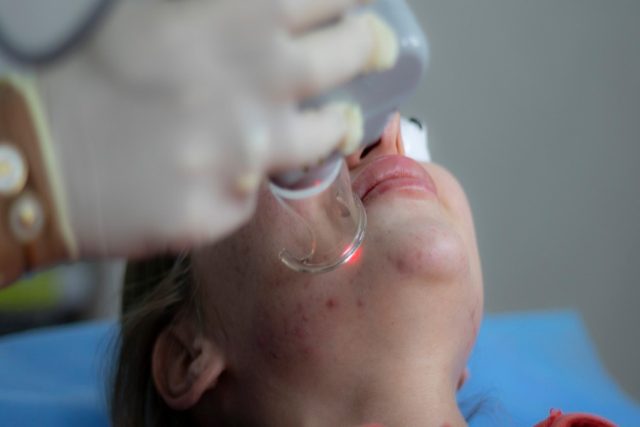Light therapy utilizes specific wavelengths of light to promote various health benefits. Recently, it gained popularity as a natural and effective therapy for multiple conditions. This comprehensive guide explores the benefits and drawbacks of light therapy, providing valuable insights into its applications and considerations for those considering this treatment.
What is Light Therapy?
Light therapy involves exposure to artificial light sources that mimic natural sunlight. These light sources emit specific wavelengths of light that have therapeutic effects on the body and mind. Bright and low-level light therapy are the two most common forms of light therapy. Bright light therapy uses a lightbox or light panel to deliver intense, bright light. It is typically used to treat seasonal affective disorder (SAD), a kind of depression people experience during specific seasons, such as winter. Bright light therapy can also benefit sleep disorders, jet lag, and certain skin conditions.
Low-level light therapy, also known as red light therapy or near-infrared therapy, uses low-intensity light-emitting diodes (LEDs) or lasers to deliver specific wavelengths of light to targeted body areas. The pros of red light therapy include skin rejuvenation, pain management, wound healing, and promoting overall wellness. Overall, light therapy is considered a safe and effective treatment for various physical and mental conditions.
Benefits of Light Therapy
Treatment of Seasonal Affective Disorder (SAD)
One of light therapy’s most well-known and researched applications is treating Seasonal Affective Disorder (SAD). SAD is a type of depression that typically occurs during the winter months when there is reduced exposure to natural sunlight. Bright light therapy effectively alleviates SAD symptoms by regulating circadian rhythms and increasing serotonin levels in the brain.
Improved Mood and Mental Well-being
Beyond treating SAD, light therapy has shown promise in improving mood and overall mental well-being. Exposure to bright light has increased serotonin levels, often lower in individuals with depression. This can lead to a reduction in depressive symptoms and an improvement in overall mood.
Regulation of Sleep Patterns
Light therapy can help regulate sleep patterns by aligning the body’s internal clock, also known as the circadian rhythm. By exposing oneself to bright light in the morning, especially for individuals with sleep disorders or jet lag, light therapy can help reset the sleep-wake cycle and improve the quality and timing of sleep.
Treatment of Skin Conditions
Low-level light therapy, specifically red light therapy, has shown promise in treating various skin conditions. It can stimulate collagen production, reduce inflammation, and promote wound healing. Red light therapy is commonly used for acne, rosacea, and psoriasis and to improve the overall texture and tone of the skin.
Pain Management and Muscle Recovery
Low-level light therapy has also managed pain and aided muscle recovery. It can help reduce inflammation, increase blood circulation, and promote the production of adenosine triphosphate (ATP), the energy source for cellular functions. As a result, light therapy is often used to alleviate pain from arthritis, joint injuries, muscle strains, and fibromyalgia.
Drawbacks Of Light Therapy
Potential Eye Strain and Discomfort
Exposure to bright light for extended periods during light therapy sessions can cause eye strain and discomfort. Following proper guidelines and recommendations for safe light therapy usage is essential, including maintaining a safe distance from the light source and wearing appropriate eye protection if necessary.
Skin Sensitivity and Irritation
Some individuals may experience skin sensitivity and irritation, particularly with high-intensity light sources or prolonged exposure to specific wavelengths. It is essential to monitor the skin closely during light therapy sessions and adjust the duration and intensity of the treatment accordingly. If any adverse reactions occur, such as redness, itching, or rash, it is recommended to discontinue the therapy and consult a healthcare professional.
Interference with Medications and Medical Conditions
Light therapy may interact with certain medications and medical conditions. For example, some drugs and supplements can increase photosensitivity, making the skin more susceptible to damage from light exposure. It is essential to inform your healthcare provider about any medications or medical conditions you have before starting light therapy to ensure its safety and effectiveness.
Limited Scientific Evidence for Some Applications
While light therapy has shown promising results in various areas, such as SAD and certain skin conditions, there is still limited scientific evidence for its effectiveness in other applications. More research is needed to establish its efficacy in treating specific conditions, such as chronic pain or neurological disorders. It is essential to approach these areas cautiously and consult healthcare professionals for guidance.
Cost and Accessibility
Light therapy devices, especially high-quality ones, can be costly. Some insurance plans may cover light therapy for specific conditions like SAD, but coverage for other uses may be limited. Additionally, accessing light therapy may be challenging for individuals living in remote areas or with limited resources. It is crucial to consider the cost and accessibility factors when exploring light therapy as a treatment option.
Tips For Safe And Effective Light Therapy
- Consult with a Healthcare Professional: Before starting light therapy, it is crucial to consult with a healthcare professional, such as a doctor or dermatologist. They can evaluate your needs, determine the appropriate treatment duration and intensity, and address potential risks or interactions with medications or existing medical conditions.
- Follow Manufacturer’s Instructions: Always carefully read and follow the manufacturer’s instructions for your light therapy device. Each device may have specific guidelines regarding the recommended distance, duration, and frequency of sessions. Adhering to these instructions will help ensure safe and effective treatment.
- Protect Your Eyes: If using a high-intensity light therapy device, consider wearing eye protection, such as specialized goggles or glasses, to shield your eyes from potential harm or discomfort. This is especially important if the light source is close to your face.
- Monitor Skin Reactions: Pay attention to any changes in your skin during and after light therapy sessions. If you experience skin sensitivity, irritation, or adverse reactions, discontinue the treatment and consult a healthcare professional.
- Be Patient and Consistent: Light therapy often requires regular and consistent use to achieve optimal results. It may take time to notice improvements, so be patient and maintain a consistent schedule as your healthcare provider recommends.
ILight therapy offers a range of potential benefits for various conditions, including SAD, mood disorders, sleep regulation, skin conditions, and pain management. However, it is crucial to consider the potential drawbacks and precautions associated with light therapy. Consulting with a healthcare professional, following safety guidelines, and being aware of individual limitations and sensitivities can help ensure safe and effective treatment. As research continues to advance, light therapy has the potential to play an increasingly significant role in promoting overall well-being and addressing specific health concerns.














